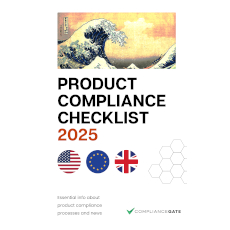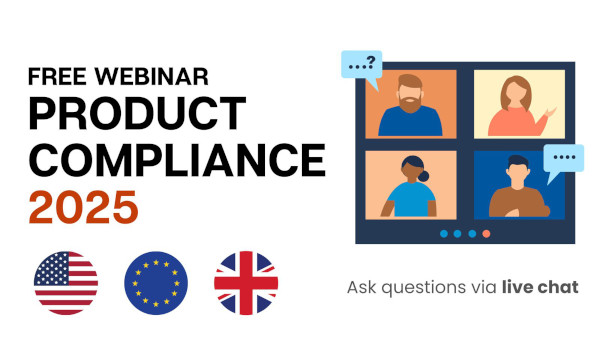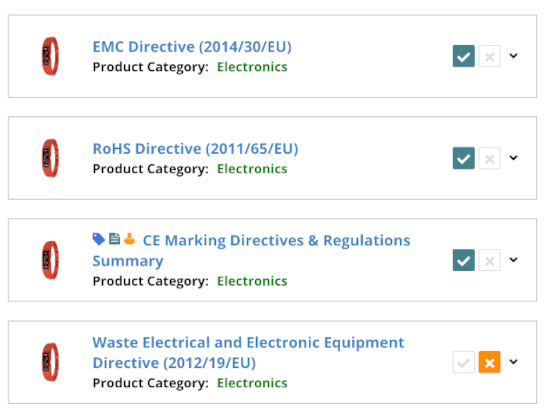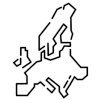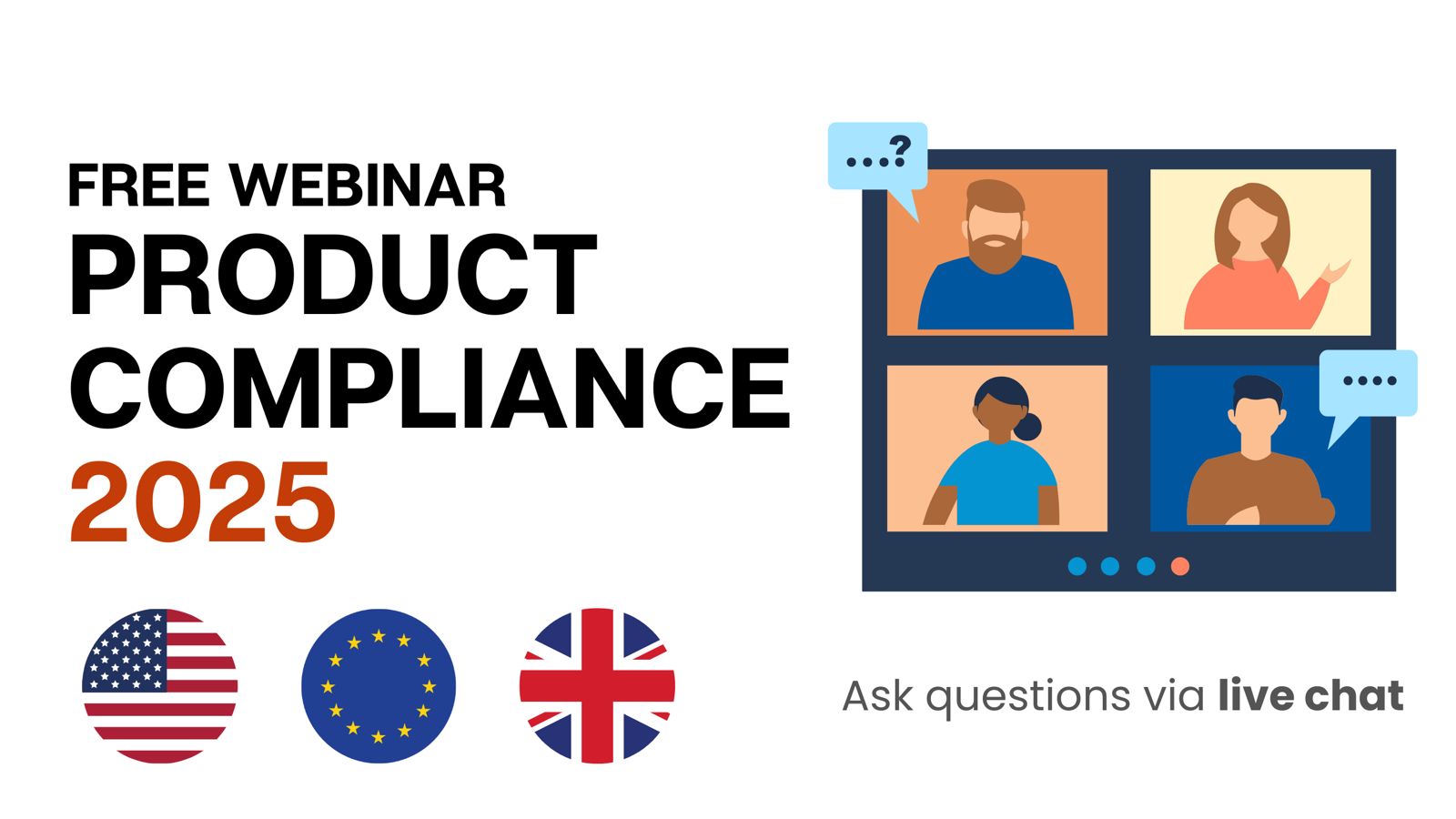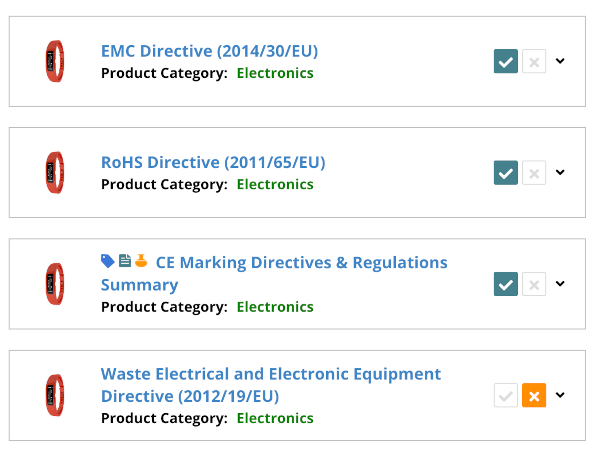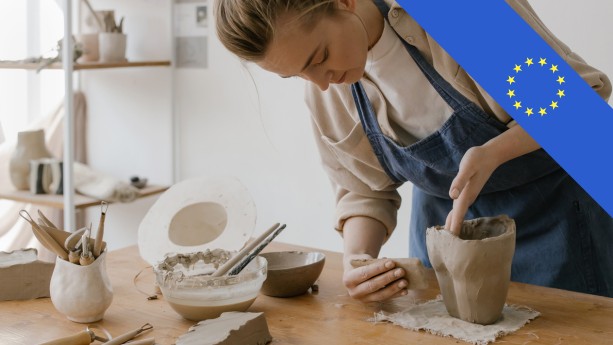
Small businesses selling handicrafts and handmade products often face unique challenges when it comes to product compliance. Understanding compliance requirements and lab testing fees can seem like insurmountable challenges – and sometimes that is actually the case. Handicrafts and handmade products can also be safety hazards, and are generally speaking, subject to the same regulations as other consumer products.
That said, there are certain strategies that can be applied to ensure that your handicrafts and handmade products are safe and compliant with applicable EU regulations and directives, including labelling and documentation requirements.
In this guide, we take a closer look at how EU regulations and directives relate to handicrafts and handmade products, as well as a few exemptions. You will also learn what you can do in practice to comply.
Handicraft examples
- Home decor
- Pottery
- Weaving
- Woodworking
- Leatherworks
- Jewelry
- Glasswork
- Embroidery
- Baskets
- Knitted items
- Artworks
Handmade product examples
- Toys
- Baby carriers
- Art prints
- Furniture
Content Overview

FREE CONSULTATION CALL (US, EU & UK)
- Request a free 30-minute call with Ivan Malloci to learn how we can help you with:
- Find product requirements
- Certification and labeling
- Lab testing
Are handicrafts and handmade products subject to product safety requirements in the EU?
Handicrafts and handmade products are generally subject to the same regulations, directives and safety requirements as all other products. This makes sense, as a product being handmade does not necessarily make it any safer. There are also cases of handicrafts and handmade products being recalled in the EU.
Example B: Set of soft toys with key ring
However, handicrafts and handmade products are often made in small batches. Sometimes, handicrafts are unique items that only exist in a single copy.
In such cases, it does not make economic sense to pay for lab testing when the fees can be many times the value of the handicraft or handmade products.
Sometimes, there is simply no way around this. In other words, some product categories are practically off-limits if you make small batches. That said, there are also strategies that can make it possible to sell handicrafts and handmade products in the EU while also staying compliant.
Before going into details, let’s have a look at what is written about handicrafts and handmade products in various EU regulations and directives.
General Product Safety Regulation
The General Product Safety Regulation essentially requires that all products be safe. This regulation covers handicrafts and handmade products not subject to other regulations and directives. Examples include children’s products that are not toys, clothing, home decoration, and other products.
The regulation does not explicitly mention handicrafts and handmade products. However, it does state that certain works of art or collectors’ items are exempt:
Antiques, such as works of art or collectors’ items are specific categories of products which cannot be expected to meet the safety requirements laid down by this Regulation, and should therefore be excluded from its scope. However, in order to prevent other products from being mistakenly considered as belonging to those categories, it is necessary to take into account that works of art are products created solely for artistic purposes, that collectors’ items are of sufficient rarity and historical or scientific interest to justify their collection and preservation, and that antiques, if they are not already works of art or collectors’ items or both, are of an extraordinary age. When assessing whether a product is an antique, such as a work of art or a collector’s item, Annex IX to Council Directive 2006/112/EC (13) could be taken into account.
This would likely not apply to most handicrafts and handmade products. As such, compliance with the GPSR is likely required.
More specifically, the GPSR sets the following requirements:
1. Compliance with applicable product standards
2. Product and packaging labelling
3. Technical documentation
Textiles Labelling Regulation
The Textiles Labelling Regulation requires that textile products carry a fibre composition label. For example, a t-shirt made of cotton must be labelled as 100% cotton. That said, the regulation exempts certain tailored and homemade textile products:
3. This Regulation shall not apply to textile products which are contracted out to persons working in their own homes or to independent firms that carry out work from materials supplied without the property therein being transferred for consideration.
4. This Regulation shall not apply to customised textile products made up by self-employed tailors.
Toy Safety Directive
The Toy Safety Directive sets requirements for toys, which are defined as follows:
This Directive shall apply to products designed or intended, whether or not exclusively, for use in play by children under 14 years of age (hereinafter referred to as toys).
We could not find any exemption or even a mention of handicrafts or handmade products in the directive.
This makes sense, as toys must, for obvious reasons, meet high safety standards. The fact that a toy is handmade does not make it safer for children.
As such, the Toy Safety Directive is likely applicable to handmade toys for children.
REACH
The REACH regulation sets substance restrictions for all consumer products and materials sold in the European Union. For example, it sets limits on the maximum amount of lead, cadmium, and DEHP a product can contain. Products containing such substances above the set limits cannot be sold.
Verifying compliance with the REACH regulation normally requires lab testing. This can be expensive if you make small amounts of goods, considering the per-unit testing fee.
However, we could not find any exemption or mention of handicrafts or handmade products in the REACH regulation.
Avoid high-risk products
When it comes to toys, children’s products, food contact materials, and other products with a higher risk level, there is no way around the need to ensure compliance with safety standards and arrange testing. It doesn’t matter if a product is handmade in someone’s home or put together on an assembly line in Vietnam – product safety is of paramount importance.
For example, if you produce handmade toys, then you must comply with the applicable mechanical safety requirements and chemical restrictions under EN 71. This can be done, but requires a deep understanding of the Toy Safety Directive and its harmonised standards.
If you are not willing to invest time and effort into this, then my best suggestion is to avoid any product that comes with a higher risk.
Product categories to avoid
- Toys
- Other children’s products
- Food contact materials
- Medical products
- Electronics
- Cosmetics
Product categories to consider (for adults only)
- Home decor
- Certain types of furniture
- Artworks
- jewellery
Materials and chemical compliance
REACH and EN 71-3, among other requirements, restrict substances in consumer products. For example, a plastic containing excessive amounts of DEHP cannot be sold in the EU. Whether or not a piece of plastic contains excessive amounts of DEHP can only be proven if you obtain a test report, which costs money.
REACH testing can cost 300 EUR or more per material. The costs can quickly add up to thousands of euros if your handicrafts or handmade products are made using many different materials or components.
However, testing may not be necessary if you procure materials that are already tested or certified as compliant. For instance, if you produce textile products, consider only buying fabrics and other materials that are OEKO Tex Standard 100 compliant.
Likewise, some brands like YKK ensure that all their components are REACH compliant. This can also be applied to jewellery parts and other categories.
It is therefore possible to ensure that your products are compliant with EU substance restrictions without spending a cent on lab testing.
Safety standards
Safety standards define, in technical terms and using drawings, what makes a product safe. For example, EN 71-1 provides detailed information on how to ensure that various aspects of toys are safe and compliant.
Ensuring compliance requires that you have a profound understanding of these technical requirements and can readily implement them into your product design and construction.
My point here is that you can comply with European product safety standards if you develop the expertise needed to confidently design compliant products. This does require that you buy and carefully study the standards, in addition to practising their implementation in real life.
Third-party lab testing is often a practical requirement for certain products, but not for all. In some cases, it may be possible to carry out your own safety assessment as long as you can document the procedure and the results.
Labelling
Product and packaging labelling is in practice mandatory for essentially all consumer products sold in the European Union. While we have identified one exemption, specifically for textile products, labelling requirements generally apply to handicrafts and handmade products as well.
At a minimum, you will need to comply with the labelling requirements under the General Product Safety regulation, which covers the following:
- Type, batch or serial number
- Manufacturer name, their registered trade name or registered trade mark
- Manufacturer postal and electronic address
- Age suitability
- Warnings
- Instructions for its safe use and disposal
Labelling individual products, even if made in small batches, can be achieved with relative ease if you create a label template that can be quickly updated. The act of physically labelling the product or packaging can be achieved in multiple ways:
- Laser engraving
- Surface print
- Insert card
- Packaging sticker
- Product sticker


